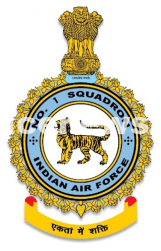The Indian Air Force (IAF) was officially established in 1932 as an auxiliary air force of the British Empire. The first squadron of the IAF, No. 1 Squadron, was raised on April 1, 1933, with the aim of supporting ground troops and carrying out aerial reconnaissance missions.
Following the establishment of No. 1 Squadron, the IAF began to plan the formation of additional squadrons. No. 2 Squadron was raised on April 1, 1941, eight years after the establishment of the first squadron. The formation of additional squadrons was delayed due to various factors, including the limited resources available to the IAF and the outbreak of World War II in 1939.
As the IAF began to expand, the Civilian Defence Flights (CDFs) were gradually phased out. By November 30, 1942, the CDFs had been disbanded, but their remaining units were organized as Flights, including No. 101 in Madras, No. 102 in Juhu, No. 103 attached to 353 RAF Squadron, and No. 104 in Vizag.
Out of the originally planned ten squadrons, No. 3 Squadron was established in October 1941, followed by No. 4 Squadron in February 1942. The IAF faced a shortage of pilots, which delayed the formation of some squadrons. No. 6, 7, and 8 Squadrons were raised in December 1942, while No. 9 Squadron was not established until January 1944. No. 10 Squadron was formed in February 1944, and No. 12 Squadron was established in December 1945.
No. 5 and No. 11 Squadrons were established after India gained independence in 1947 to avoid confusion with locally-based RAF Squadrons with the same numbers. The formation of these squadrons marked a new phase in the development of the IAF as an independent air force. Today, the IAF has over 60 squadrons and is one of the largest air forces in the world.










